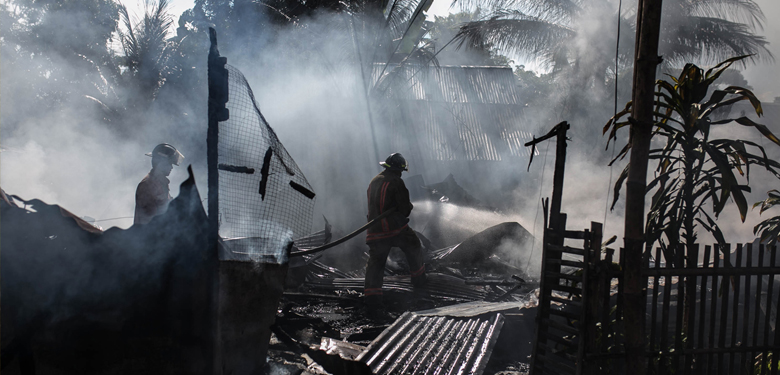The Localization of Humanitarian Response, and Implications for Corporate Donors
The frequency and severity of natural disasters in the Asia-Pacific region highlights the importance of building the capacity of national disaster management agencies and local organizations to be able to respond effectively. Local organizations and authorities are the first responders to disasters and humanitarian emergencies when they occur, and these players have a critically important understanding of local language and cultural norms. Due to their permanent positions within the affected communities, local and national organizations play key roles in longer term recovery, rebuilding operations, and in building resilience for future emergencies.
There is a growing trend towards the ‘localization of humanitarian response that recognizes the important role of “recognizing, respecting, and strengthening the leadership by local authorities and the capacity of local civil society in humanitarian action.” This process seems to better address the needs of affected communities. The objectives of the localization approach are to increase investment and funding towards building the capacity of local organizations, and to improve partnerships and coordination between international and local counterparts. Capacity building, within humanitarian response, focuses on developing the skills and resources necessary for local responders to act effectively in the field. ‘Capacity’ has both organizational and operational dimensions, and covers management and governance skills as well as the physical delivery of response programs. Local responders to humanitarian emergencies are likely to have strong existing capacity in terms of community presence and logistical access to remote areas. Gaps in capacity are likely to be in resource management as well as sectoral and technical expertise. Activities that characterize local capacity-building are extremely varied, but these may include expertise exchange, joint strategic planning, technology transfer, and post-emergency transition measures.
The localization agenda seeks to emphasize the complementarity of national and international organizations to maximize the comparative advantages of each. International NGOs have an important role to play in humanitarian response through their ability to provide specialized resources such as:
- in-depth needs assessments and evaluations;
- training and education on risk mitigation and preparedness; and
- international funding.
Whilst local responders are best placed to respond to humanitarian emergencies, many are likely to struggle to scale up high-volume deliveries and provide support over the longer term due to limited resources. This emphasizes why capacity building of local organizations and relevant authorities is critically important. International NGOs will continue to play a key role in humanitarian response, but this is more likely to be geared towards capacity building and supplementing large-scale response efforts. The Overseas Development Institute (ODI) has termed this approach ‘as local as possible, as international as necessary’.
This growing movement has been exemplified by international agreements such as the ‘Grand Bargain’. The agreement was signed by 30 of the world’s largest aid donors and providers including IFRC, ICRC, UNICEF, UNDP, OCHA, Mercy Corps, and Oxfam International. The Grand Bargain commits donors and aid organizations to providing 25 percent of global humanitarian funding to local and national responders by 2020. The agreement also entails increasing un-earmarked funds and increasing multi-year funding to ensure greater predictability and continuity in humanitarian response.
Needs assessments are constantly reshuffling which relief efforts are deemed high priority on-the-ground. Community needs can change rapidly and ear-marked funds for immediate relief purposes are sometimes turned down by responding NGOs who cannot utilize these funds. Response organizations require a high-level of flexibility and need to be able to exercise their own judgement to ensure that community needs are met. Many companies look to donate ear-marked funds with stringent conditions that align with their corporate philanthropic strategy, however, these conditions can distract NGOs from response efforts.
Ear-marked funds are those donated and allocated for a specific task or purpose in the response effort. A study by the Inter-Agency Standing Committee (IASC) Humanitarian Financing Task Team (HFTT) found that ear-marked funding restricts the ability of organizations to respond effectively to crises as a result of limited flexibility in use, and typically short expenditure windows. Donating un-earmarked funds allow organizations to prioritize and channel funds according to ongoing needs assessments. In the case of the Sunda Straits tsunami, the IFRC was able to mobilize un-earmarked funds from prior donation appeals, and channel them towards their local counterparts in Palang Merah, Indonesia. The traditionally low availability of un-earmarked funds is one of the key factors that impedes humanitarian response at the onset of a crisis, as even funds designated for rapid release can sometimes take several days to negotiate.
Companies and foundations that have, or are looking to start contributing towards, humanitarian response or disaster preparedness initiatives need to be aware of this evolving landscape. To ensure that corporate contributions have an impact and effectively reach those in need, corporate partnerships need to consider local presence and capabilities. Companies should also look to provide un-earmarked funding when possible. However, if funds must be earmarked to align with corporate strategy and philanthropic aims, the use of a high-level ear-mark that is sector or region specific still offers NGOs the flexibility to adapt to changing realities on-the-ground.
Please contact us at sp@elevatelimited.com to learn more about how our Strategic Partner Program connects businesses and humanitarian organizations to collaboratively support disaster resilience, preparedness, and recovery.
